Music I’ve bought in October.
%3A+Nord) |  | ) |  | %3A+No+Trendy+R%C3%A9chauff%C3%A9+(live+Birmingham+95)) |
 | ) |  |  | 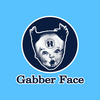 |
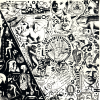 | 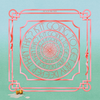 | 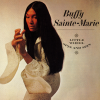 | 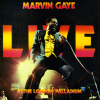 | ) |
 |  | +(1)) | +(2)) |  |
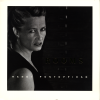 | 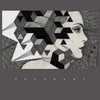 | 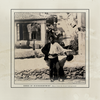 |  |  |
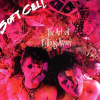 |  | %3A+In+the+Court+Of+The+Crimson+King+(2019+Stereo+Mix)) | ) | ) |
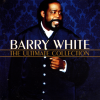 |  |  | 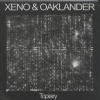 |  |
) |  | ) | ) |
It’s a grey day, so I think comics are required. And this time around, I think I’ve mostly got Norwegian and Swedish comics?
| Lady Lykez: Woza |  |
08:32: Jammerdalen by Flu Hartberg (No Comprendo Press)
Hm… I think I’ve read some of his books before, but I think it was mostly absurd humour stuff? This starts off as a kinda-sorta serious story about religion and stuff, and the disparity between the art style and the subject matter makes for odd reading.
Then things take a fantasy turn, and for a couple of pages I was going “this is almost dream-like”, but then I remembered that in the pages preceding this, there was one panel of the protagonist falling asleep. Doh! So I was reading this all annoyed, going “is this going to be revealed a dream now? Now then? Now?”
But it’s… there are interesting bits in here. Some sections work well.
| The Soft Pink Truth: Is It Going To Get Any Deeper Than This? |  |
09:14: Men I Trust by Tommi Parrish (Lystring)
Oh — this is the Swedish edition of the book that’s released by Fantagraphics next month. Oops. And I already ordered that book, so now I’ll end up with two copies…
I love the artwork… However, the book seems very informed by AA meeting talk — it’s all swirling down that drain? Pages and pages of this just isn’t very inspiring.
But I mean… the artwork’s so good that I want to love the book anyway.
It’s possible that something was lost in the Swedish translation. I guess I’ll find out when the English version arrives.
| King Crimson: The Complete 1969 Recordings (11): In the Court Of The Crimson King (2019 Stereo Mix) |  |
10:12: Bow & Arrow by Ida Larmo (Cappelen Damm)
This is a classic autobio book — it’s about her year as an art school student in London in 2002 (when she was 22). And it’s like… my god, is it possible to be that young? It’s from a different era (pre-smartphone), so it’s also got that nostalgic sheen, but she depicts herself being so incredibly naive that it gets a bit cringe-worthy. And I’m not sure whether she means to come off that way, either, because:
When she’s not self-righteously explaining how reasonable it is for her to not know even the most basic things, she spends the rest of the time detailing what morons British people are, and how disgusting their habits are. That uncomfortable mix of self-righteous prejudice and ignorance?
It makes for entertaining reading, but I had to hide behind a pillow at points, because it’s just so embarrassing. *cringe*
| Mahmoud Fadl: Drummers Of The Nile Go South |  |
11:07: Enki by Thomas Falla Eriksen (Jippi forlag)
Oh, wow. I think there’s a vague possibility that he’s seen some Moebius artwork once? Briefly? Perhaps?
It’s very nice.
The story is super-duper 70s, too, with crystals, yin & yang, spirituality and good and evil forces and stuff. It’s pretty good? And looks great.
I think it does what it sets out to do very aptly. And perhaps the 70s are back again?
12:06: Nap Time
And now it’s nap time. I have no idea why I got up at five this morning…
| Dry Cleaning: Stumpwork |  |
16:08: Krüger & Krogh 3: Nord og ned – del 1 by Kabíček, Skandfer, Agdestein (Strand forlag)
I’m awake! I’m awake!
That’s a weird posture… has he been shot or something? Hunchback?
Oh, it’s supposed to be very windy. Check.
This is supposed to be the most successful Norwegian series in modern times, and the publisher seems to have sent the same talking points to all reviewers (“classic French(ey) comics, set in the past, but new!”, or something). The story is fun, even though if it’s one third fan service, with lots of “oh, there’s that building I recognise from the 60s” and “oh, there’s that reference”.
The artwork isn’t very attractive, though. Everybody’s bobble-headed and relentlessly ugly. At least that leaves a lot of leeway for the artist to draw very distinctive faces that are easy to tell apart.
The book is OK.
| Bobbie Gentry: The Girl From Chickasaw County (7): Patchwork |  |
16:58: Les strates by Pénélope Baglieu (Kartago)
This is a collection of anecdotes from Baglieu’s life, mostly from her childhood and teenage years. And it’s so charming — it’s irresistible.
It’s like the polar opposite of Larmo’s book, even if it covers some of the same ground. Baglieu even goes to London as a student! But while the Larmo book was totally seen from the her point-of-view at the time (and it’s unclear whether she’s processed what happened at all), Baglieu tells these anecdotes from her current point-of-view, and reflects upon her choices and pokes gentle fun at herself.
It’s a lot of fun, and sometimes heartbreaking.
| Espen Reinertsen: Forgaflingspop |  |
17:39: Kattis serier by Katarina Mörk (Lystring)
I picked up all these books from Lystring at a book shop in town. I’d never heard of the publisher before, and it seems like the shop owner discovered them recently too or something? Because none of them were in the store the previous time I visited them… Doesn’t look like the web site has been updated since 2009?
This is a collection of zines from 2007-2022, and it starts off kinda rough (but punk)…
But then rapidly becomes very enjoyable.
| The Lounge Lizards: Voice of Chunk |  |
A large number of the strips are about attending punk shows, and they’re a lot of fun. It’s unapologetic and straightforward, and it’s a really entertaining read.
| Alice Coltrane: Kirtan Turiya Sings |  |
19:31: Måste ringa brorsan by Magnus Jonason (Kartago)
This is apparently autobiographical, but I haven’t checked? It presents itself as being so, but you never know. It’s about the author’s older brother dying, or rather — mostly about the aftermath of him dying, and cleaning out the apartment, and then ruminating about their relationship.
And the reason I’m wondering whether this is fictional or not is because the author portrays himself as resenting his brother a lot, and presents the dead brother as being a fuck-up, not very bright, and something of an asshole. Which seems harsh for a thing like this! Of course he loves his sibling, but he doesn’t portray his brother as being lovable, or having, well, any interesting qualities at all. (Until the eulogy where he realises that there’s stuff he didn’t know about him.)
So it seems… oddly undigested? … even as he portrays himself talking to a shrink a lot about his family, too. It’s just “hmm”.
But misunderstand me correctly! It’s a really good book! Quite moving. But odd.
| Alasdair Roberts og Völvur: The Old Fabled River |  |
20:21: Monstress Volume Seven by Marjorie Liu / Sana Takeda (Image Comics)
As usual, I don’t really remember what’s going on here, since it’s so long between volumes, and there are no “as you know, Maika, you have a bionic arm and an alien entity called Zinn” lines. I keep meaning to go back and read the entire thing…
… but I find that I’m fine with reading these books in a state of befuddlement. Confusion is fun! And some of the storytelling seems very subtle, and I’d hate to be disappointed by finding out that it’s all 100% straightforward by re-reading it all. (That’s happened more than once before — I’m reading something serialised over years, thinking that it’s all very complex and satisfying, and then sitting down to re-read it all in one go, and find that it’s all pretty trivial.)
The artwork is lovely as usual, but it would be nice if there was more than one template for faces — but she gives almost everybody distinctive hair-dos, so you can tell them apart by looking at the hair.
| Sylvester: Sylvester-Step II |  |
21:21: The Poe Clan vol 2 by Moto Hagio (Fantagraphics)
I found the first volume of this to be underwhelming, so I wasn’t going to buy any further volumes, but apparently I had already ordered this one. Oops.
It’s not that these comics are bad or anything — they were influential and trend-setting. While stories about teenage vampires could become repetetive, she varies the storylines admirably.
| Various: Cold Wave Volume 2 |  |
(Even if the plots are kinda clichés in themselves — in this one Edgar gets amnesia and they futz around for 70 pages until he gets his memory back.)
| Melvin Gibbs: 4 + 1 equals 5 for May 25 |  |
I was thinking I’d ditch this book, but after the first story, it really picked up. Every story seemed fresh and intriguing.
| Body Meπa: The Work Is Slow |  |
23:49: The End
But now it’s sleepy time.
I wasn’t planning on dazing with comics any time soon, but then I got a bunch of new books in the mail the other day, and I need a break from taking a break, so why not. Everybody to the reading couch!
| Dry Cleaning: Stumpwork |  |
12:32: Love and Rockets #12 by Gilbert & Jaime Hernandez (Fantagraphics)
Oh, cool, they’ve made a t-shirt of that cover (I have a huge print of it, made by Jordan Crane, in my kitchen). I gotta get that t-shirt..
… but… wha… they’ve put the Fantagraphics logo into the design? WHYYY!!?!?! WHY!!?
OK, now I’m not getting it.
A new Love & Rockets issue is always an event, and this is a really good one. We get an excerpt from one of Fritz’ thingies, and it’s pretty intriguing.
And more drama back at the farm — Vivienne is getting married to Ray’s brother! And there’s mysteries swirling around in the air…
Excellent.
| Dry Cleaning: Stumpwork |  |
13:00: Måsvarrelsen by Joe Kessler (Lystring)
This is a Swedish publication, but the story is wordless, so it’s weird that they’ve gone for a Swedish name on the cover — you’d think it would be more international sales if they’ve used an English title. And flipping through this I wasn’t sure whether I had a different edition of it already or not…
Aha! New York Review Comics is publishing this next year as The Gull Yettin.
This book is a fairly straightforward narrative, but it’s fraught with meaning and symbolism, and some of the more obvious readings are probably too reductive (“it’s about divorce”).
It’s really pretty, and it’s a compelling read. Repeated readings are probably to be recommended.
| Kuedo: Severant |  |
13:22: Raj 1 – Les Disparus de la Ville dorée by Conrad & Wilbur (Cinebook)
Man, this is dense. There’s a couple dozen characters, and many disappearances and murders and a few comedy skits thrown in. All in 46 pages.
Conrad is severely limited as an artist — he’s got two basic template for faces, for instance, and he tries to keep everybody separate by varying follicle configuration only. A common trick employed by many artists that are similarly limited in facial geometry is to keep characters dressed the same from scene to scene, but Conrad has them changing clothes, too, so I found myself skipping back and forth, comparing stache geometry to try to keep the characters separate — and I failed in a couple of instances.
So it’s a choppy, frustrating read… but it does have its charms. The story isn’t even finished in this album, but ends in the middle of the story, so I’m tempted to get the next one just to see what it’s all about, because they’ve got some really mysterious mystery going on here.
| Xiu Xiu: These Boots Are Made For Walking |  |
13:55: Ducks by Kate Beaton (Drawn & Quarterly)
Oh, so this is what Beaton has been doing since her last Hark, A Vagrant collection in 2015? It’s a brick of a book, and I’m guessing from the portentous physical appearance that Beaton is not doing humour any more? (Like everybody else, I loved Hark, A Vagrant.)
Some reviewer somewhere used the phrase “performative respectability” about a different Drawn & Quarterly book (perhaps the latest Drnaso book?), and that’s probably extremely unfair to bring up here, but I was thinking it all the same.
| TSHA: Capricorn Sun |  |
Because this is a really good book, about a really interesting milieu most of us don’t have any insights into. It’s well made, and has a good flow. The artwork isn’t as exuberant as earlier, but it’s very attractive and the storytelling is on point.
It’s just… I feel less enthusiastic about this than I thought I would. I’m not a reviewer, than god, so I don’t have to articulate why, but I think it has something to do with how well-constructed the book is. That is, it feels like a book that has been worked fully through, and then fully through perhaps with an editor again? And then again. So we have scenes like the above that are exactly the sort of scenes an editor would insist on putting in, where we have Obvious Foreshadowing and Theme That A Reviewer Will Pick Up On, and it makes the book seem a bit artificial to me.
But it’s a good book! An obvious, well-deserved entry that will be on hundreds of Best Comics of 2022 lists in a month or so.
| David Bowie: Brilliant Live Adventures (2): No Trendy Réchauffé (live Birmingham 95) |  |
Heh. That’s a duck with an oil slick on the cover? Well, that’s something.
| Various: The Wire Tapper 60 |  |
16:22: Unretouchable by Sofia Szamosi (Lerner)
I assumed that this was autobio, because it’s got that look (very Satrapi via MariNaomi), but it doesn’t really read that way. That is, it’s more of a proper story?
It’s pretty good. I guess it’s aimed at teenagers, really, and it’s about body positivity and stuff. It gets a bit preachy, but that’s fine — it’s pretty amusing.
One annoying thing: She uses pseudonyms for everything from Vogue to Facebook, which seems rather unnecessary and coy.
| Pigface: Gub |  |
17:02: The Fake Lake Bottom Feeder by Adrian Norvid (Drawn & Quarterly)
This seems like exactly the sort of thing I should be love, but I don’t.
It might just be me — I’m not exactly full of mirth this week — but I just didn’t find this to be funny. I don’t know why; seems like pretty solid jokes to me.
17:33: Santos Sisters #2 by Greg & Fake (Floating World)
This is a perfect riff on Archie…
… complete with ads and all. And I have no idea whether they’re fake or not — the ads are absurd, but so is the world, so I just have no idea.
That’s the problem with these comics, too: While they’re amusing, they’re not more amusing than reading an Archie comic is? Perhaps it’s meant to be read while stoned?
| Amerie: Touch |  |
17:50: The Prometheite by Ari S. Mulch (Uncivilized Books)
Err… how come Henry suddenly got a totally different face in the fourth panel?
Anyway, Uncivilized Books used to be such a strong publisher. I’d buy anything they published sight unseen for, like, a decade? It feels like? Their slate the past few years has had several weaker books, and I’m starting to lose faith — perhaps I should start paying attention to the contents before shopping from them these days.
Because this is pretty bad. It’s a riff on Frankenstein, of course, and has totally logical scenes like this, where you’d bring a box with a dead frog to an acquaintance so you can show them a neat trick. As one does.
As a book, it’s barely there.
But it includes a nice postcard.
| Electric Company: invalidObject Series (new) |  |
18:34: Oslo by Johan Ingemarsson (Lystring)
Now we’re talking. This is a classic autobio comic — the author is Swedish, and they go on a drunken weekend trip to Oslo. Lots of chatting, some embarrassing encounters in bars, and not much being achieved in general. It’s really good.
For instance, they have an encounter with a manager type who tells them about the disastrous comeback launch for an old musician, and I assumed that this was either made up or pseudonymous, but I googled him now, and he exists. But the comeback was in 2010, and this book is from 2022?
This time gap possibly also explains some of the bewildering architecture on display here. I don’t think he has photo reference for anything? So I’m sitting here going “OK, that’s obviously that bar… but that bridge doesn’t exist anywhere in Oslo… and they’re entering that other bar, but going to the basement? That bar doesn’t have one?” And so on.
I’m not complaining! It’s just a thing.
It’s a very entertaining book, and has great flow. Even though nothing major happens, it still feels like an odyssey of sorts. Or perhaps because of that — it doesn’t feel like a fake narrative structure has been moulded onto an experience, but instead it feels like real life.
| Brendan Perry: Songs of Disenchantment |  |
19:17: Alvar Mayor by Carlos Trillo & Enrique Breccia (Epicenter Comics)
Is that a new publisher?
And this book reprints a bunch of short (10+ pages) stories about a guy that goes around setting things right, sometimes with supernatural help?
It’s a physically large book, and it’s printed on super-glossy paper. I’m not sure that this does much for this material (from the late 70s).
The artwork’s nice, but after three of these slight stories with twist endings, I’m getting rather fed up, so I ditched it 40 pages in.
| Brendan Perry: Songs of Disenchantment |  |
19:34: Dungeon Early Years vol 3 by Sfar, Trondheim, Gaultier, Oiry (NBM)
The publishing history of the Donjon series in English is so confusing — smarller albums, collected albums, and then the original French publication history is pretty complicated, too. So these days I never know beforehand whether I’m buying something I’ve already read before or not.
But this reprints two albums originally published in 2008, so I’m hoping it’ll be new to me…
The first album is drawn by Christophe Gaultier, which is an unfamiliar name to me. Great artwork, though.
The story isn’t that inspired — I mean, it’s got great velocity stuff, but it just doesn’t make that much sense. I mean, it’s a blackmail plot, but they’re blackmailing Hyacinthe, and they have to know that he can just kill them? So why mistreat his father so that he dies? Then they have no leverage? Did they write the plot over a drunken weekend and then send it off to Gaultier?
| Hannah Diamond: Reflections |  |
Stephane Oiry does the other album, which is more lighthearted and straightforward: It tells the story of how the Donjon became the Donjon. It’s fun, but it also feels like the end of something — like it was intended to be the final album in the series. It’s very different from the other albums. I wonder what the French fans thought of it…
Hm… Oh! It’s from 2021 — the first album was from 2008, but they got the series going again recently.
The writing is average. It’s typical humor that we’ve seen ad nauseam before. The spark of genius that we usually find in the Potron-minet is completely absent. Even the irreverent side is absent! And social commentary drawn from today’s world grossly misses the mark and seems uninteresting to me.
Total disappointment.
And if “survive today” is the last volume of the saga Potron twink? I wouldn’t mind. Because it builds the junction between Potron Minet and Zenith.
[…]
But pleasing readers by filling in the gaps doesn’t make for good stories as a rule. This album is proof of that. My pleasure is complete but tasteless, no surprises.
Heh heh. That’s a nice translation you’ve got of the series name, Google. But it doesn’t sound like the fans liked it much, and I understand why — it’s an anomalous, sentimental and nerdy entry in the series.
| Various: Close To The Noise Floor (1) |  |
20:40: Rock Collector by Becca Tobin (Silver Sprocket)
Very odd.
But appealing and amusing.
| Various: Close To The Noise Floor (1) |  |
20:48: Ginseng Roots #10 by Craig Thompson (Uncivilized Books)
Hey! This series is still going? I mean, I like it, but last time around, it was starting to ramble quite a lot. I think Thompson is doing it as he goes along without any plan? Which is fine.
This is an interesting, entertaining issue, though. The Thompson Brothers go to Korea and go to comics festivals and visit ginseng farms and stuff…
But I’m wondering about these bits — is the right-hand side here (and an earlier sequence) drawn by the brother? The art style is different, and the tone is kind of harsh? Very jarring. But interesting.
| Various: Close To The Noise Floor (1) |  |
21:08: IR$ 1 – La voie fiscale by Vrancken / Desberg (Zoom)
So is this about an intrepid tax collector? The French plumb everything and anything for ideas for comics, so I wouldn’t be surprised. Let’s find out.
It is! The storytelling is a bit on the choppy side, but it gets the job done.
It’s a fairly standard storyline involving Auschwitz survivors and Swiss banks, but it’s all very… professionally done? It’s OK. I don’t know whether I want to read any further albums… I guess not? There’s 24 of them published in France now, though, so it apparently has its fans. With a falling popularity curve.
This is Desberg’s great series that explores the tax and financial world, whose hero is an American tax auditor. The concept of this modern thriller is quite interesting as it is about fighting money laundering. Here is a rather contemporary man who fights against dirty money as well as corruption: he already has all my sympathy.
This series was also immediately a great commercial success, as evidenced by the volumes placed on the shelves of large commercial surfaces. The series has attracted nearly a million readers in France and Belgium, which is no small thing. I also appreciated the rhythm of publication (a new volume each year which forms a diptych).
Well, perhaps I’ll give subsequent albums a go, if the Danes keep on publishing them.
| Rsundin: invalidObject Series (default) |  |
21:33: Lady S 15 – Dans la Gueule du tigre by Philippe Aymond (Zoom)
This is another French(ey) series I had no idea existed… Oh, it was originally written by Van Hamme.
I was pretty bored by this initially — I mean, it looks fine, and there’s nothing immediately offputting about the storytelling — but it just seemed so standard?
But then I got into it. It’s just so professionally made — the characters have character, the plot has more than the required number of twists, but they don’t feel gratuitous, and there’s some originality here: Lady S is a secret agent (sort of), but she’s on holiday with her great aunt who has Alzheimer’s, so drama ensues when they get caught up in the action.
I don’t think I’ll be getting any further albums, but it was a pleasant surprise.
| Floorplan: Paradise |  |
22:09: Screwed Up by Konstantin Steshenko (Adhouse Books)
Look what I found! I bought a whole bunch of Adhouse books some months ago, but this little book was hiding between two other books, so I hadn’t noticed it.
Even as gross out humour books go, this is really gross.
Not a fan.
| Floorplan: Paradise |  |
22:15: Hyperthick by Steve Aylett (Floating World)
Oh, this is one of those books that take public domain comics and adds new, incongruous text. (And some editing.)
I found myself flipping through this more than reading it, because it just didn’t seem funny enough to me to invest time in? So I may well be mistaken, and this is a work of pure genius or something, but I dropped it.
| Floorplan: Paradise |  |
22:34: The End
Or I may just be totally zonked by all these comics, because I think I’ll start considering perhaps thinking about going to bed now.
I was watching a box set of WWII movies from Japan, but I couldn’t finish two of the movies, because they were just too brutally… er… bad.
So I’m switching it up completely! And starting on the box set of movies from… er… Occupied France in 1942.
Totally different!
Autant-Lara was hot shit during WWII and the years following, but was pilloried by the Cahiers crowd in the 50s and sank like a rock — before making a come-back in the 80s as a Le Pen representative and rabid anti-Semite.
So making a harmless comedy like this under Nazi supervision seems like foreshadowing.
*gasp*
Kittens!
The utmost in stache tech.
This started off kinda fun, but got progressively creepier and creepier. (Whoda thunk a director happy to work under Nazis was creepy?) But more importantly — kinda boring?
So:
La mariage de Chiffon. Claude Autant-Lara. 1942.
This blog post is part of the Eclipse series.